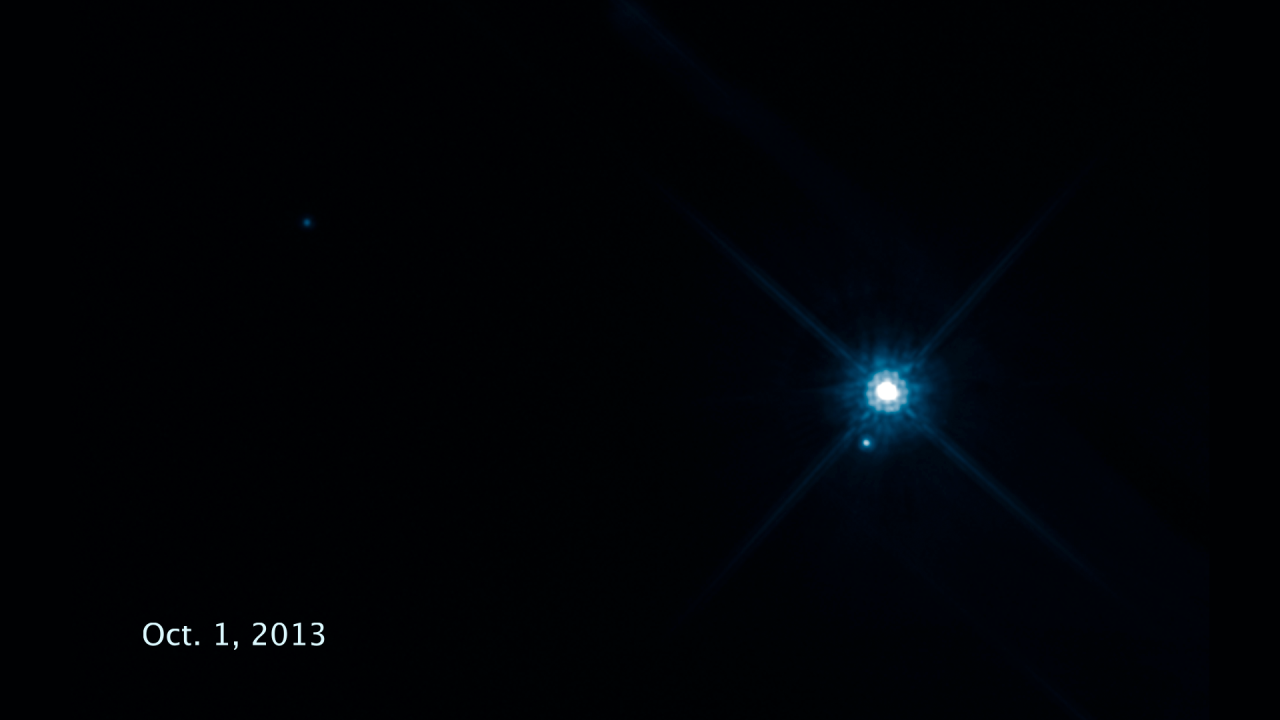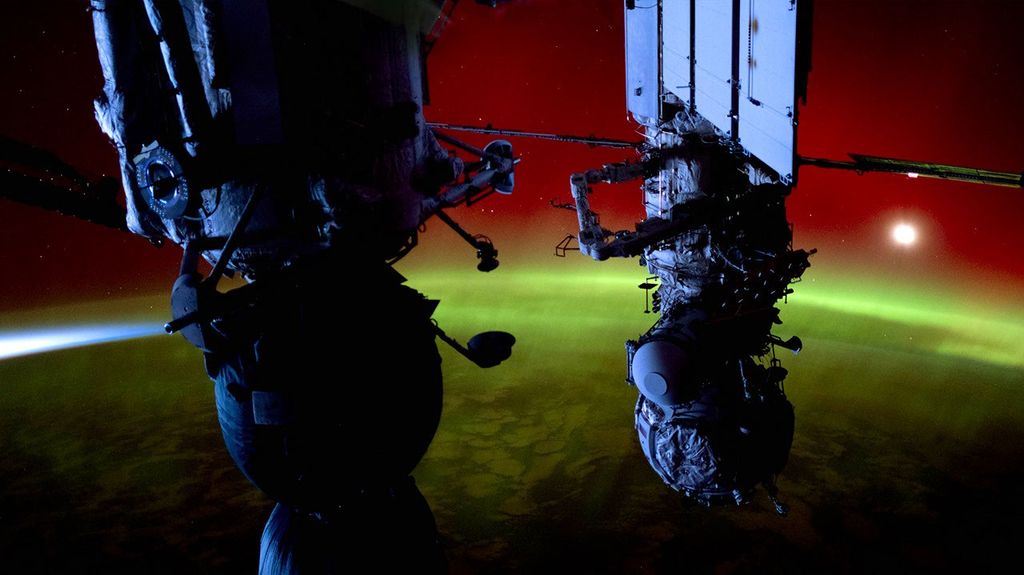1 min read
White Dwarf’s Gravity Bends Light from Background Star
This animation shows the motion of a white dwarf star passing in front of a distant background star. During the passage, the faraway star appears to change its position slightly, because its light path has been altered by the white dwarf's gravity.
When the white dwarf Stein 2051 B passed in front of a background star, the distant star's light was offset by only about 2 milliarcseconds from its actual position. This deviation is so small that it is equivalent to observing an ant crawl across the surface of a quarter from 1,500 miles away. From this measurement, astronomers calculated that the white dwarf's mass is roughly 68 percent of the sun's mass.
White dwarfs are the burned-out remnants of normal stars. Stein 2051 B is named for its discoverer, Dutch Roman Catholic priest and astronomer Johan Stein. It resides 17 light-years from Earth. The background star is about 5,000 light-years away.
- Release DateJune 7, 2017
- Science ReleaseHubble Astronomers Develop a New Use for a Century-Old Relativity Experiment to Measure a White Dwarf’s Mass
- Credit
Related Images & Videos

Hubble Measures Deflection of Starlight by a Foreground Object
How Gravity Can Bend Starlight This illustration reveals how the gravity of a white dwarf star warps space and bends the light of a distant star behind it. White dwarfs are the burned-out remnants of normal stars. The Hubble Space Telescope captured images of the dead star,...

White Dwarf Star Stein 2051 B
Stellar Alignment Yields White Dwarf's Mass Looks can be deceiving. In this Hubble Space Telescope image, the white dwarf star Stein 2051 B and the smaller star below it appear to be close neighbors. The stars, however, reside far away from each other. Stein 2051 B is 17...

Compass and Scale Image for Binary Star System Stein 2051
This Hubble Space Telescope image shows the binary star system Stein 2051 on October 1, 2013, consisting of the brighter, redder "A" component at lower right and the fainter, bluer "B" component near the center, a white dwarf star. Because these stars are relatively close to...

White Dwarf’s Motion Through Space
This time-lapse movie, made from eight Hubble Space Telescope images, shows the apparent motion of the white dwarf star Stein 2051 B as it passes in front of a distant star. The observations were taken between Oct. 1, 2013, and Oct. 14, 2015. White dwarfs are the burned-out...
Share
Details
Claire Andreoli
NASA’s Goddard Space Flight Center
Greenbelt, Maryland
claire.andreoli@nasa.gov

























